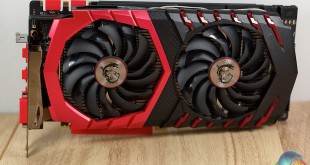
In recent weeks we have analysed GTX 1080 partner cards from ASUS and GIGABYTE, and today we look at the Gaming X 8G model from MSI. This graphics card is supplied with a beautiful looking custom dual fan cooler and is overclocked out of the box. How does it hold up against the Gigabyte and Asus models ?
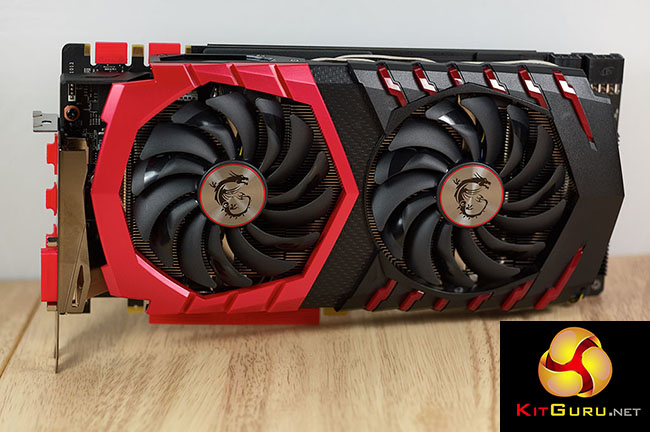
It is interesting to see that MSI are the only one of the three big Nvidia partners (MSI, Gigabyte and ASUS) who have opted for a dual fan cooler. Gigabyte and ASUS have felt the move to a triple fan configuration was worthwhile. I still feel that this MSI design is the most attractive of all graphics cards available on the market today however – I have said it before, but I will say it again – this really is the Cameron Diaz of graphics cards.
Like all the other GTX1080 cards we have reviewed in recent weeks, MSI have adopted an RGB lighting system. It certainly seems the feature everyone wants right now.
| GPU | Geforce GTX970 | GeForce GTX980 |
Geforce GTX 980 Ti | Geforce GTX Titan X | Geforce GTX 1080 | Geforce GTX 1070 |
| Streaming Multiprocessors | 13 | 16 | 22 | 24 | 20 | 15 |
| CUDA Cores | 1664 | 2048 | 2816 | 3072 | 2560 | 1920 |
| Base Clock | 1050 mhz | 1126 mhz | 1000 mhz | 1000 mhz | 1607 mhz | 1506 mhz |
| GPU Boost Clock | 1178 mhz | 1216 mhz | 1075 mhz | 1076 mhz | 1733 mhz | 1683 mhz |
| Total Video memory | 4GB | 4GB | 6GB | 12GB | 8GB | 8GB |
| Texture Units | 104 | 128 | 176 | 192 | 160 | 120 |
| Texture fill-rate | 109.2 Gigatexels/Sec | 144.1 Gigatexels/Sec | 176 Gigatexels/Sec | 192 Gigatexels/Sec | 257.1 Gigatexels/Sec | 180.7 GigaTexels/sec |
| Memory Clock | 7000 mhz | 7000 mhz | 7000 mhz | 7000 mhz | 1250mhz | 2002mhz |
| Memory Bandwidth | 224 GB/s | 224 GB/sec | 336.5 GB/sec | 336.5 GB/sec | 320GB/s | 256GB/s |
| Bus Width | 256bit | 256bit | 384bit | 384bit | 256bit | 256 bit |
| ROPs | 56 | 64 | 96 | 96 | 64 | 64 |
| Manufacturing Process | 28nm | 28nm | 28nm | 28nm | 16nm | 16nm |
| TDP | 145 watts | 165 watts | 250 watts | 250 watts | 180 watts | 150 watts |
The Nvidia GTX1080 ships with 2560 CUDA cores and 20 SM units. The 8GB of GDDR5X memory is connected via a 256 bit memory interface. This new G5X memory offers a huge step up in bandwidth, when compared against the older GDDR5 standard. It runs at a data rate of 10Gbps, giving 43% more bandwidth than the GTX980 GPU.
The MSI card ships at 1,683mhz with a boost of 1,823mhz – the company call this GAMING MODE. The 8GB of GDDR5 memory is set at 1,251mhz.
There is an OC mode in software which offers a slight increase in clock speeds. In OC MODE the core increases to 1,709mhz with a 1,849mhz boost, and the memory increases to 1,264mhz. The MSI website (HERE) shows the three available settings, including ‘silent mode' which downclocks the card to 1607mhz while reducing fan speeds. Unless you are running your system in a hot climate, have poor case airflow, or just loathe fan noise, then we can't imagine too many people using ‘Silent Mode'. The Gaming X 8G is actually a fairly quiet card under general conditions, but more on that later.
We test the card in the fastest OC Mode as we are pretty confident that most users buying this card will install the software on the disc and push the ‘OC Mode' button, shown above. We have also tested the Gigabyte and Asus cards at their fastest software rated profile settings, so this keeps everything on an even footing.
MSI are using some fantastic box artwork highlighting the lovely dual tone cooler.
The MSI GTX 1080 Gaming X 8G is a stunning card and by far my favourite looking of the GTX 1080 solutions I have reviewed so far. MSI have opted for two very large fans rather than three smaller ones. The card is fitted with a solid RGB capable black backplate, which is expected at this price point.
MSI have fitted this card with two very special fans – they are double ball bearing Twin Frozr VI TORX 2.0 fans which offer 13% more airflow and 22% more air pressure than the earlier version.
If you are paying close attention you may have noticed the steeper curved blades on the fans – this is to ‘accelerate the airflow' increasing its effectiveness.
I think the MSI GTX 1080 Gaming X 8G looks great from every angle, even if the red and black colour scheme is somewhat overused in recent years.
The MSI GTX 1080 Gaming X 8G has a dual DVI connector, 3 DisplayPort connectors, and a single HDMI connector. The Asus ROG Strix GTX 1080 Aura ditched one of the DisplayPort connectors in favour of another HDMI connector.
The MSI card takes power from the slot along with a single 8 pin and an extra single 6 pin (75 watt) PCIe power connector. The Gigabyte GTX 1080 G1 Gaming RGB took all the power it needed from a single 8 pin power connector, and the ASUS GTX 1080 Strix OC was equipped with two 8 Pin PCI e power connectors.
The SLI connectors are shown in the image above. If you haven’t already, then I recommend you head to THIS PAGE to get detailed information on the new SLI configuration introduced in May with Pascal hardware.
MSI include two useful software packages with the graphics card – the MSI Gaming App, and MSI Afterburner. The MSI Gaming App offers three preset clock and fan profiles, and you can also adjust LED colours and monitor the hardware.
MSI Afterburner really needs no introduction at this stage. It is actually my favourite overclocking software which I use regularly on my own systems at home.
The Twin Frozr VI cooler is formidable. It comprises a series of nickel plated copper heatpipes ranging in size from 6mm to 8mm. These heatpipes run into two separate racks of aluminium fins on either side of the core. MSI have not opted for a direct touch heatpipe heatsink design on this card. The copper heatsink baseplate is solid nickel plated and is polished to a high finish. This is a great looking cooling system.
MSI have fitted this card with a strip which you can see in the above (left). This strip is called a ‘rugged anti bending strip' and is designed to help reduce card sag when it is installed inside a system. The card is also fitted with a memory cooling plate and a PWM heatsink to help improve stability and overclocking as well as reducing temperatures.
MSI are incorporating Hi-C Capacitors, Super Ferrite Chokes and Japanese Solid Capacitors throughout the design, which is always good to see.
I have spent the last couple of weeks benchmarking a selection of AMD and NVIDIA cards with the latest drivers on one of our new 6700k test beds. We are using the AMD Crimson Edition Display Driver, Version 16.15.2211 and Nvidia ForceWare 368.39 driver. Due to public demand we also add in a range of tests at 1080p to supplement the results at 1440p and Ultra HD 4K resolutions.
We list each resolution test for every game on its own page – meaning if you are just interested in 4K resolutions for instance, you can skip the other resolutions without effort. If you want to read the whole review and find all the page changes annoying – click on our menu system top right of these pages, and head to ’32. view all pages’.
We are using a custom Titan Bayonet system supplied by Overclockers UK as the basis of our test system today. Read more on this system over HERE.
Case: Phanteks Enthoo Evolv ATX Mid Tower
Processor: Intel 6700K @ 4.4ghz
Memory: Corsair Vengeance LPX 16GB (2x8GB) @ 3000mhz
Motherboard: ASUS Z170-E DDR4 ATX Motherboard
Power Supply: Super Flower Leadex 850W Gold Certified
Software: Microsoft Windows 10 64 Bit
SSD: Samsung 250GB 850 EVO
HDD: Seagate 1TB 7,200 rpm 64MB Cache.

If you want to purchase this system yourself head to THIS page on OCUK.
Graphics cards:
MSI GTX 1080 Gaming X 8G RGB – OC Mode (1,709mhz core / 1,849mhz boost / 5,056 mhz memory)
Comparison Cards on test:
Gigabyte GTX 1080 G1 Gaming RGB (1721 mhz core / 1860 mhz boost / 5,005 mhz memory)
Nvidia GTX 1080 Founders Edition (1607mhz core/ 1733mhz boost / 5,005 mhz memory)
Nvidia GTX 1070 Founders Edition (1506mhz core/ 1683mhz boost / 4,006 mhz memory)
Sapphire R9 390 Nitro 8GB (Rev 2 w/ backplate). (1040mhz core / 1,500 mhz memory)
Sapphire R9 295X2 (1,018 mhz core / 1,250mhz memory)
AMD R9 Fury X (1,050 mhz core / 500 mhz memory)
AMD R9 Nano (1,000mhz core / 500 mhz memory)
Gigabyte GTX980 Ti XTREME Gaming (1,216 mhz core / 1800mhz memory)
Nvidia GTX Titan Z (706 mhz core / 1,753 mhz memory)
Nvidia GTX Titan X (1,000 mhz core / 1,753 mhz memory)
Asus GTX980 Strix (1,178 mhz core / 1,753 mhz memory)
Nvidia GTX980 Ti (1,000 mhz core / 1,753 mhz memory)
Sapphire R9 390X Tri-X 8GB (1,055 mhz core / 1,500 mhz memory)
Sapphire R9 390 Nitro 8GB (1,010 mhz core / 1,500 mhz memory)
Software:
Windows 10 64 bit
Unigine Heaven Benchmark
3DMark 11
3DMark
Fraps Professional
Steam Client
FurMark
Games:
Ashes Of the Singularity
Dirt Rally
Hitman 2016
Middle Earth: Shadow Of Mordor
Rise Of the Tomb Raider
Grand Theft Auto 5
Metro Last Light Redux
Additional equipment:
Leica S-E (006) medium format camera with 100mm Leica F2 lens.
We perform under real world conditions, meaning KitGuru tests games across five closely matched runs and then average out the results to get an accurate median figure. If we use scripted benchmarks, they are mentioned on the relevant page.
Game descriptions edited with courtesy from Wikipedia.
3DMark 11 is designed for testing DirectX 11 hardware running on Windows 7 and Windows Vista. The benchmark includes six all new benchmark tests that make extensive use of all the new features in DirectX 11 including tessellation, compute shaders and multi-threading. After running the tests 3DMark gives your system a score with larger numbers indicating better performance. Trusted by gamers worldwide to give accurate and unbiased results, 3DMark 11 is the best way to test DirectX 11 under game-like loads.
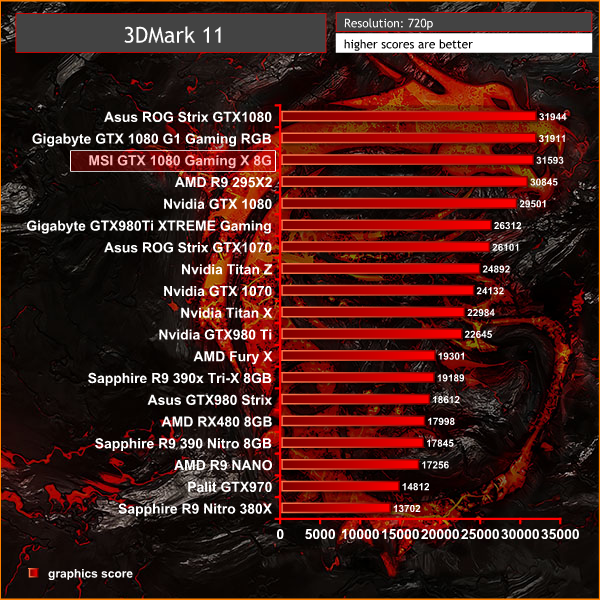
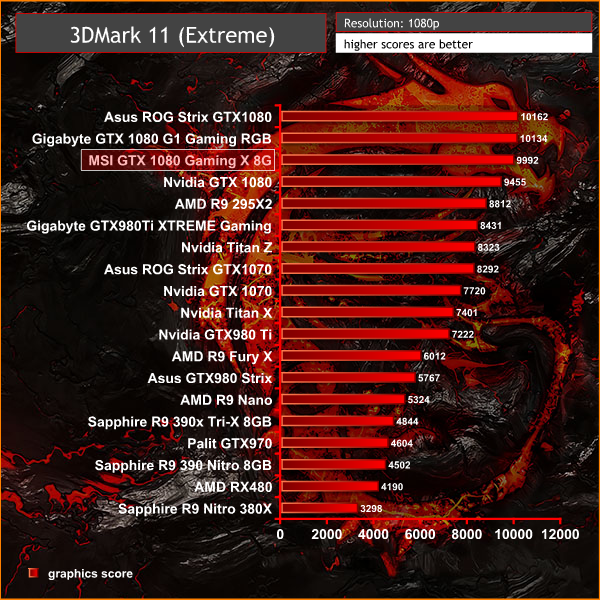
The MSI GTX 1080 Gaming X 8G scores around 10,000 points in the graphics test in the Extreme test.
3DMark is an essential tool used by millions of gamers, hundreds of hardware review sites and many of the world’s leading manufacturers to measure PC gaming performance.
Futuremark say “Use it to test your PC’s limits and measure the impact of overclocking and tweaking your system. Search our massive results database and see how your PC compares or just admire the graphics and wonder why all PC games don’t look this good.
To get more out of your PC, put 3DMark in your PC.”
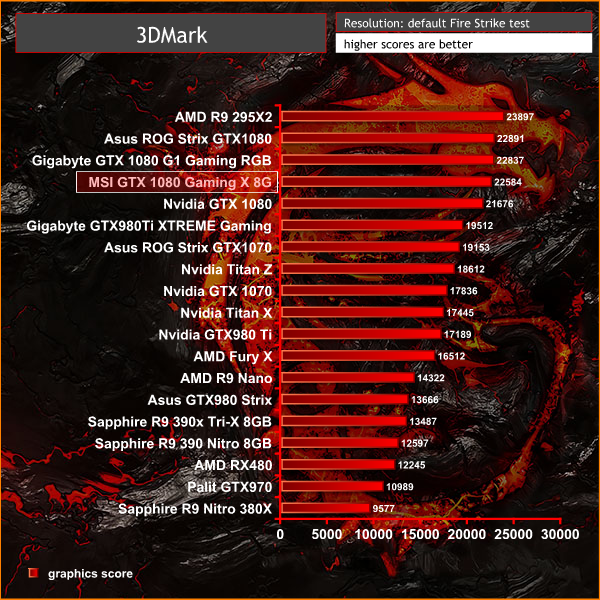
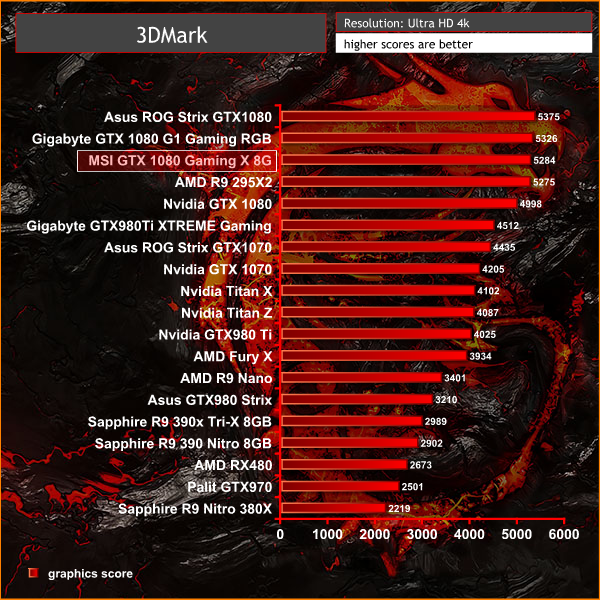
As expected, the results fall in the chart just behind the faster clocked cards.
Unigine provides an interesting way to test hardware. It can be easily adapted to various projects due to its elaborated software design and flexible toolset. A lot of their customers claim that they have never seen such extremely-effective code, which is so easy to understand.
Heaven Benchmark is a DirectX 11 GPU benchmark based on advanced Unigine engine from Unigine Corp. It reveals the enchanting magic of floating islands with a tiny village hidden in the cloudy skies. Interactive mode provides emerging experience of exploring the intricate world of steampunk. Efficient and well-architected framework makes Unigine highly scalable:
- Multiple API (DirectX 9 / DirectX 10 / DirectX 11 / OpenGL) render
- Cross-platform: MS Windows (XP, Vista, Windows 7) / Linux
- Full support of 32bit and 64bit systems
- Multicore CPU support
- Little / big endian support (ready for game consoles)
- Powerful C++ API
- Comprehensive performance profiling system
- Flexible XML-based data structures
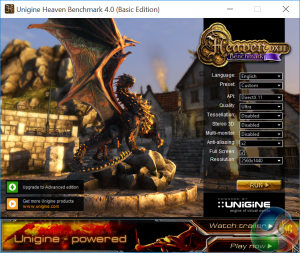
We test at 2560×1440 with quality setting at ULTRA, Tessellation at NORMAL, and Anti-Aliasing at x2.
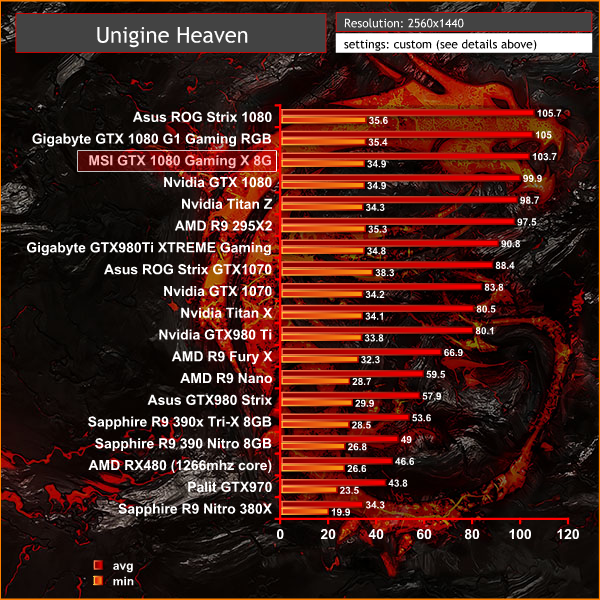
This tessellation heavy benchmark tends to favour Nvidia hardware. As such we can expect great performance from a GTX 1080. The MSI GTX 1080 Gaming X 8G does not fail to deliver, averaging 103.7 frames per second.
Ashes of the Singularity is a real-time strategy game set in the future where descendants of humans (called Post- Humans) and a powerful artificial intelligence (called the Substrate) fight a war for control of a resource known as Turinium.
Players will engage in massive-scale land/air battles by commanding entire armies of their own design. Each game takes place on one area of a planet, with each player starting with a home base (known as a Nexus) and a single construction unit.
We test the final retail game at 1080p resolution and with EXTREME image quality settings, shown above.
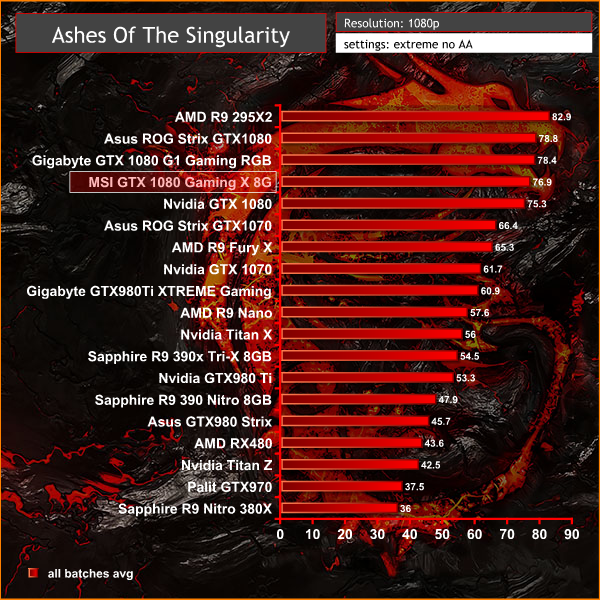
At 1080p in the Direct X 12 game, the MSI GTX 1080 Gaming X 8G takes a position behind the Gigabyte GTX 1080 G1 Gaming.
Ashes of the Singularity is a real-time strategy game set in the future where descendants of humans (called Post- Humans) and a powerful artificial intelligence (called the Substrate) fight a war for control of a resource known as Turinium.
Players will engage in massive-scale land/air battles by commanding entire armies of their own design. Each game takes place on one area of a planet, with each player starting with a home base (known as a Nexus) and a single construction unit.
We test the final retail game at 1440p resolution and with EXTREME image quality settings, shown above.
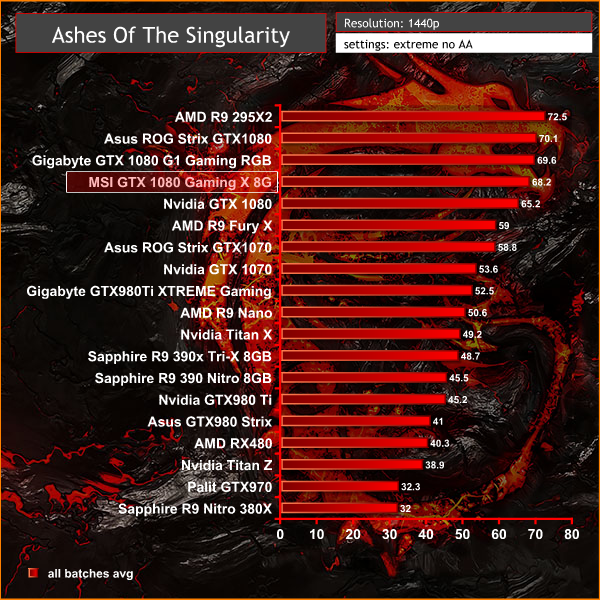
Excellent performance at 1440p, averaging over 68 frames per second.
Ashes of the Singularity is a real-time strategy game set in the future where descendants of humans (called Post- Humans) and a powerful artificial intelligence (called the Substrate) fight a war for control of a resource known as Turinium.
Players will engage in massive-scale land/air battles by commanding entire armies of their own design. Each game takes place on one area of a planet, with each player starting with a home base (known as a Nexus) and a single construction unit.
We test the final retail game at 4k resolution and with EXTREME image quality settings, shown above.
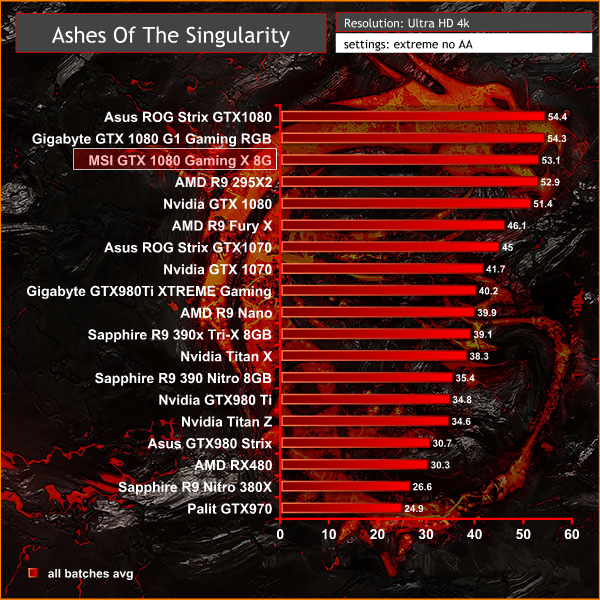
At Ultra HD 4k the MSI GTX 1080 Gaming X 8G averages 53 frames per second.
Middle-earth: Shadow of Mordor is a third-person open world video game, where the player controls a ranger by the name of Talion who seeks revenge on the forces of Sauron after his family, including his wife, are killed. Players can travel across locations in the game through parkour, riding monsters, or accessing Forge Towers, which serve as fast travel points.
We test at 1440p with the image quality settings at Ultra.
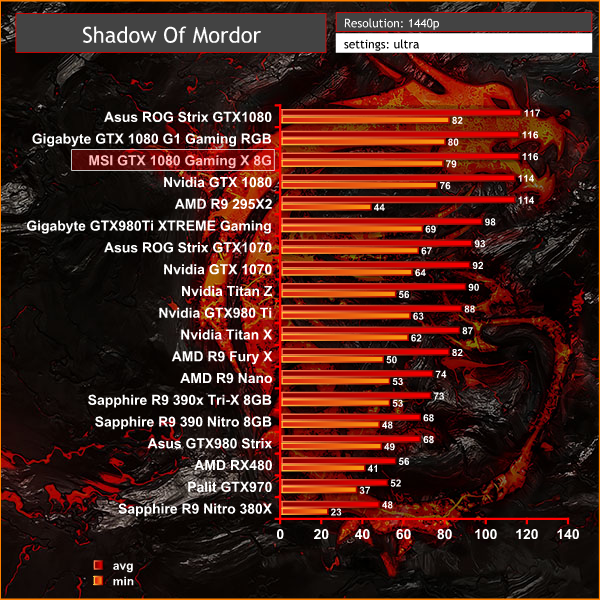
No problems powering this engine at 1440p, averaging almost 120 frames per second, which is ideal if you have one of the latest 120hz gaming panels.
Middle-earth: Shadow of Mordor is a third-person open world video game, where the player controls a ranger by the name of Talion who seeks revenge on the forces of Sauron after his family, including his wife, are killed. Players can travel across locations in the game through parkour, riding monsters, or accessing Forge Towers, which serve as fast travel points.
With test at Ultra HD 4k resolution with Ultra image settings enabled.
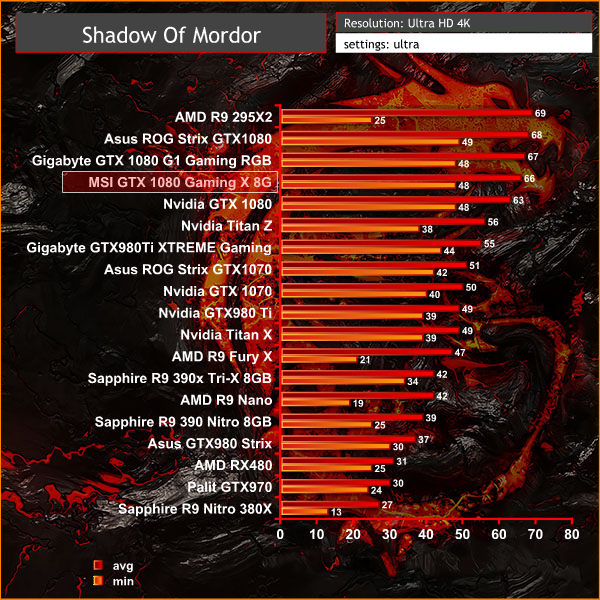
Solid performance, and 3 frames per second ahead of the GTX 1080 Founders Edition.
Dirt Rally is developed by British video game developer Codemasters using the in house Ego engine. Development began with a small team of individuals following the release of their 2012 video game Dirt: Showdown. Codemasters have emphasised a desire to create a simulation with Dirt Rally. They started by prototyping a handling model and creating tracks based on map data. The game employs a different physics model from previous titles, rebuilt from the ground up.
We test at 1080p with 8x MSAA and the ultra image quality setting enabled.
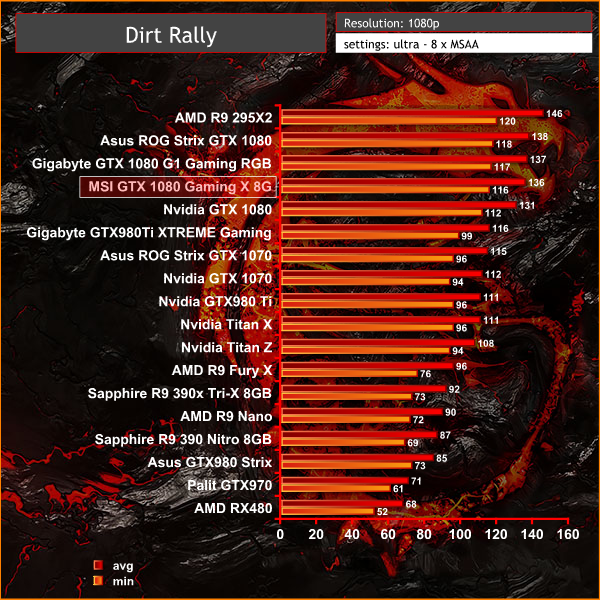
Dirt Rally is a great looking racing game, and the GTX1080 hardware has enough power on tap to drive frame rates above 120.
Dirt Rally is developed by British video game developer Codemasters using the in house Ego engine. Development began with a small team of individuals following the release of their 2012 video game Dirt: Showdown. Codemasters have emphasised a desire to create a simulation with Dirt Rally. They started by prototyping a handling model and creating tracks based on map data. The game employs a different physics model from previous titles, rebuilt from the ground up.
We test at 1440 with 8x MSAA and the ultra image quality setting enabled.
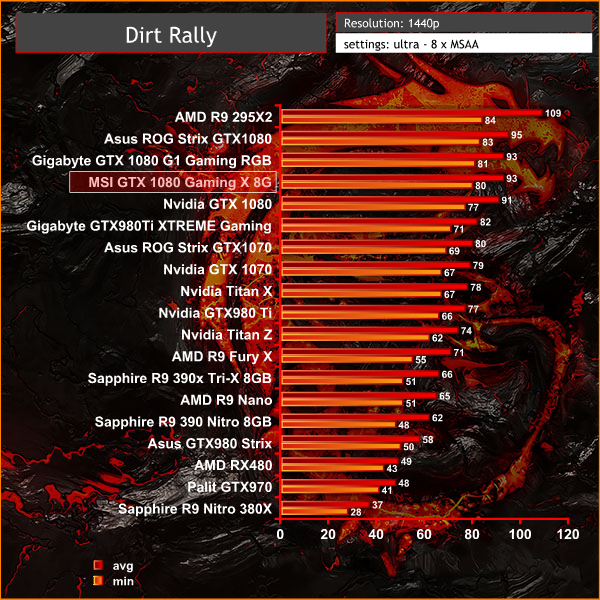
No problems holding a frame rate constantly above 60 at all times at 1440p.
Dirt Rally is developed by British video game developer Codemasters using the in house Ego engine. Development began with a small team of individuals following the release of their 2012 video game Dirt: Showdown. Codemasters have emphasised a desire to create a simulation with Dirt Rally. They started by prototyping a handling model and creating tracks based on map data. The game employs a different physics model from previous titles, rebuilt from the ground up.
We test at Ultra HD 4k with 8x MSAA and the ultra image quality setting enabled.
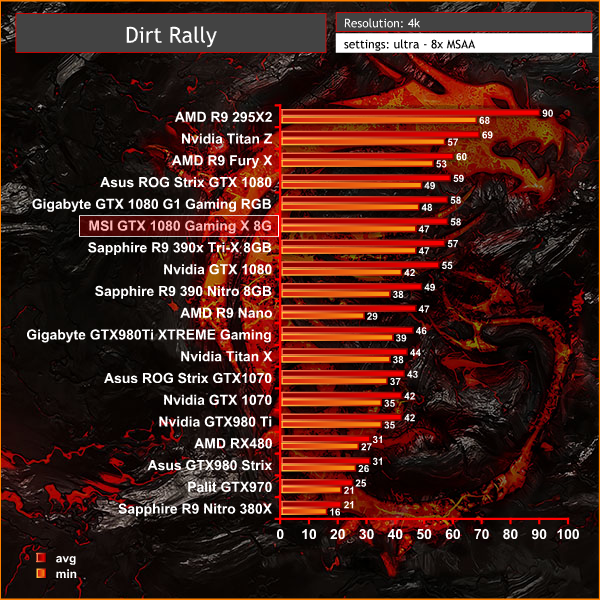
At Ultra HD 4K resolution, the MSI GTX 1080 Gaming X holds frame rates between 45 and 60 at all times. The only card to maintain 60fps+ at these settings at Ultra HD 4K however is the R9 295X2.
Rise of the Tomb Raider is a third-person action-adventure game that features similar gameplay found in 2013's Tomb Raider. Players control Lara Croft through various environments, battling enemies, and completing puzzle platforming sections, while using improvised weapons and gadgets in order to progress through the story. It uses a Direct X 12 capable engine.
We enable Direct X 12, Vsync is off and graphics are set to the ‘very high' profile, shown above. We test the Nvidia Titan Z with the SLi optimisation both disabled, then enabled. This is clearly marked in the graph. See more HERE.
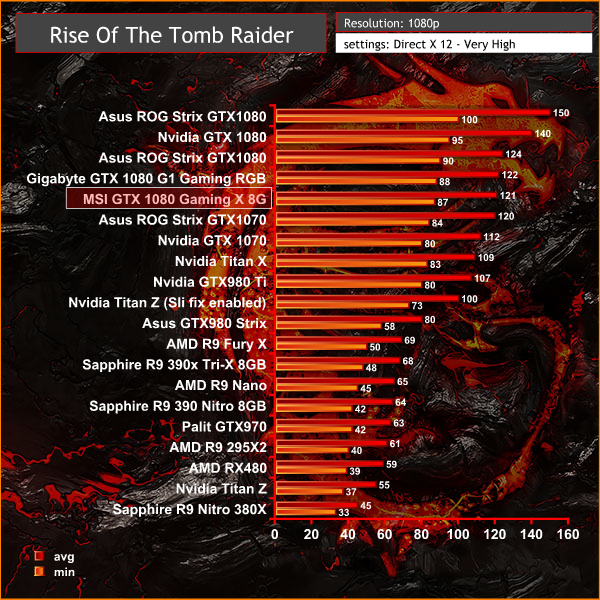
Stellar performance at 1080p in this Direct X 12 title, averaging 121 frames per second.
Rise of the Tomb Raider is a third-person action-adventure game that features similar gameplay found in 2013's Tomb Raider. Players control Lara Croft through various environments, battling enemies, and completing puzzle platforming sections, while using improvised weapons and gadgets in order to progress through the story. It uses a Direct X 12 capable engine.
We enable Direct X 12, Vsync is off and graphics are set to the ‘very high' profile, shown above. We test the Nvidia Titan Z with the SLi optimisation both disabled, then enabled. This is clearly marked in the graph. See more HERE.
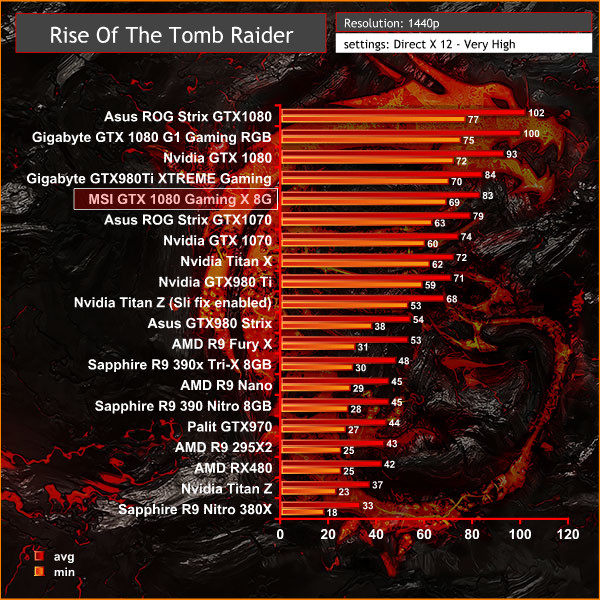
At 1440p the MSI GTX 1080 Gaming X 8G holds an average frame rate in excess of 80, and more importantly constantly above 60 fps.
Rise of the Tomb Raider is a third-person action-adventure game that features similar gameplay found in 2013's Tomb Raider. Players control Lara Croft through various environments, battling enemies, and completing puzzle platforming sections, while using improvised weapons and gadgets in order to progress through the story. It uses a Direct X 12 capable engine.
We enable Direct X 12, Vsync is off and graphics are set to the ‘very high' profile, shown above. We test the Nvidia Titan Z with the SLi optimisation both disabled, then enabled. This is clearly marked in the graph. See more HERE.
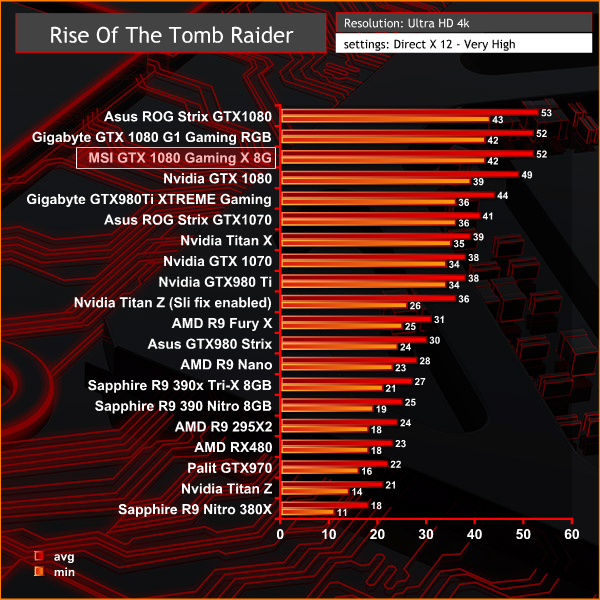
At Ultra HD 4k the MSI GTX 1080 Gaming X 8G averages 52 frames per second, dropping to 42 frames in the more intensive sections of the environment.
Grand Theft Auto V is an action-adventure game played from either a first-person or third-person view. Players complete missions—linear scenarios with set objectives—to progress through the story. Outside of missions, players may freely roam the open world. Composed of the San Andreas open countryside area and the fictional city of Los Santos, the world is much larger in area than earlier entries in the series. It may be fully explored after the game's beginning without restriction, although story progress unlocks more gameplay content.
We maximise all the image quality settings, but leave anti aliasing turned off, as it dramatically impacts performance.
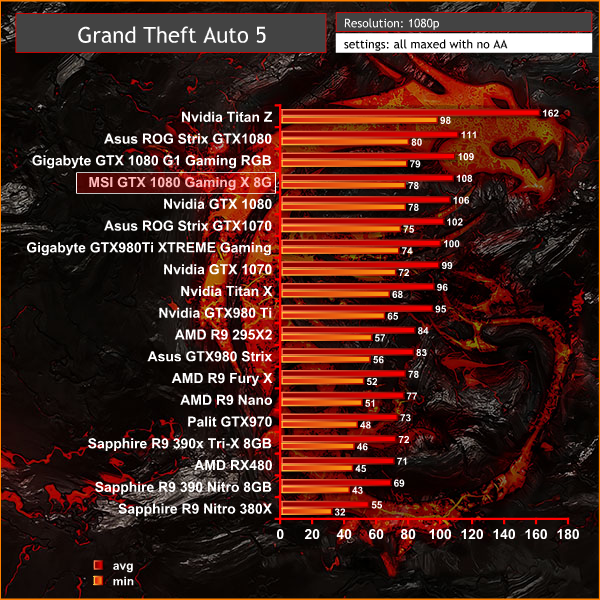
This engine runs exceptionally well on Nvidia hardware, especially the latest GTX 1080 high end cards. The frame rate holds close to 80 or above, at all times.
Grand Theft Auto V is an action-adventure game played from either a first-person or third-person view. Players complete missions—linear scenarios with set objectives—to progress through the story. Outside of missions, players may freely roam the open world. Composed of the San Andreas open countryside area and the fictional city of Los Santos, the world is much larger in area than earlier entries in the series. It may be fully explored after the game's beginning without restriction, although story progress unlocks more gameplay content.
We maximise all the image quality settings, but leave anti aliasing turned off, as it dramatically impacts performance.
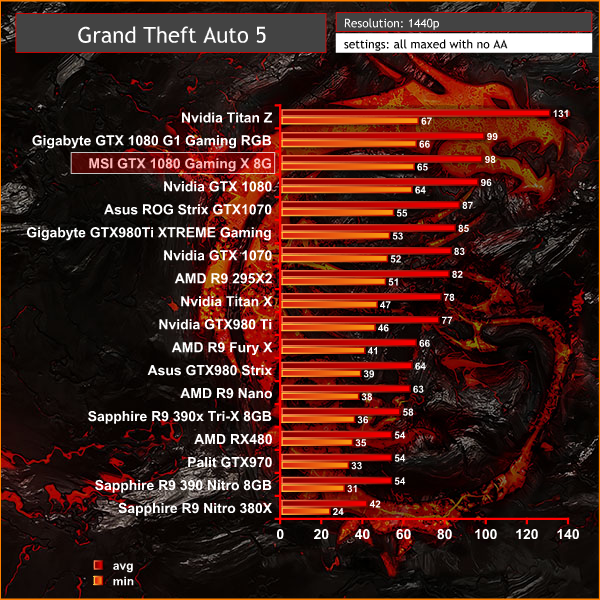
At 1440p the MSI GTX 1080 Gaming X 8G holds a frame rate above 60 at all times.
Grand Theft Auto V is an action-adventure game played from either a first-person or third-person view. Players complete missions—linear scenarios with set objectives—to progress through the story. Outside of missions, players may freely roam the open world. Composed of the San Andreas open countryside area and the fictional city of Los Santos, the world is much larger in area than earlier entries in the series. It may be fully explored after the game's beginning without restriction, although story progress unlocks more gameplay content.
We maximise all the image quality settings, but leave anti aliasing turned off, as it dramatically impacts performance.
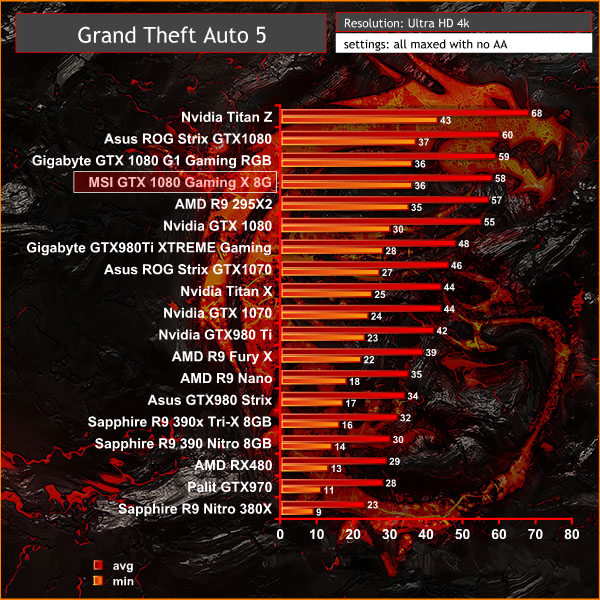
This engine is very demanding at Ultra HD 4k, especially with all the eye candy cranked. To get the best experience at these settings, you really will need two cards in SLi.
Just like the original game Metro 2033, Metro: Last Light is played from the perspective of Artyom, the player-character. The story takes place in post-apocalyptic Moscow, mostly inside the metro system, but occasionally missions bring the player above ground. Metro: Last Light takes place one year after the events of Metro 2033, following the canonical ending in which Artyom chose to proceed with the missile strike against the Dark Ones (this happens regardless of your actions in the first game). Redux adds all the DLC and graphical improvements.
Quality-Very High, SSAA-on, Texture Filtering-16x, Motion Blur-Normal, Tessellation-Normal, Advanced Physx-off.
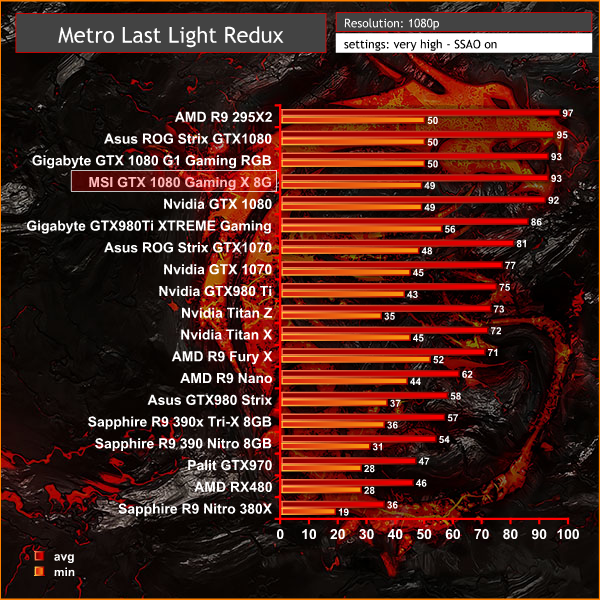
Super smooth frame rates holding an average over 90.Just like the original game Metro 2033, Metro: Last Light is played from the perspective of Artyom, the player-character. The story takes place in post-apocalyptic Moscow, mostly inside the metro system, but occasionally missions bring the player above ground. Metro: Last Light takes place one year after the events of Metro 2033, following the canonical ending in which Artyom chose to proceed with the missile strike against the Dark Ones (this happens regardless of your actions in the first game). Redux adds all the DLC and graphical improvements.
Quality-Very High, SSAA-on, Texture Filtering-16x, Motion Blur-Normal, Tessellation-Normal, Advanced Physx-off.
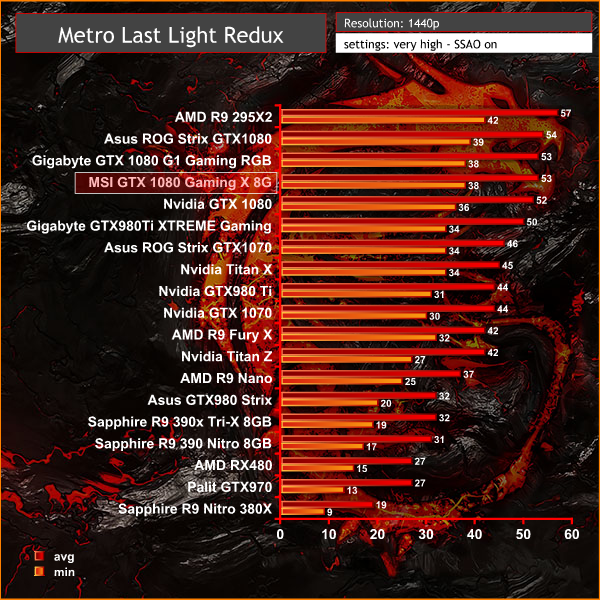
A demanding engine at 1440p but the MSI GTX 1080 Gaming X 8G maintains smooth frame rates throughout.
Just like the original game Metro 2033, Metro: Last Light is played from the perspective of Artyom, the player-character. The story takes place in post-apocalyptic Moscow, mostly inside the metro system, but occasionally missions bring the player above ground. Metro: Last Light takes place one year after the events of Metro 2033, following the canonical ending in which Artyom chose to proceed with the missile strike against the Dark Ones (this happens regardless of your actions in the first game). Redux adds all the DLC and graphical improvements.
Quality-High, SSAA-off, Texture Filtering-16x, Motion Blur-Normal, Tessellation-Normal, Advanced Physx-off.
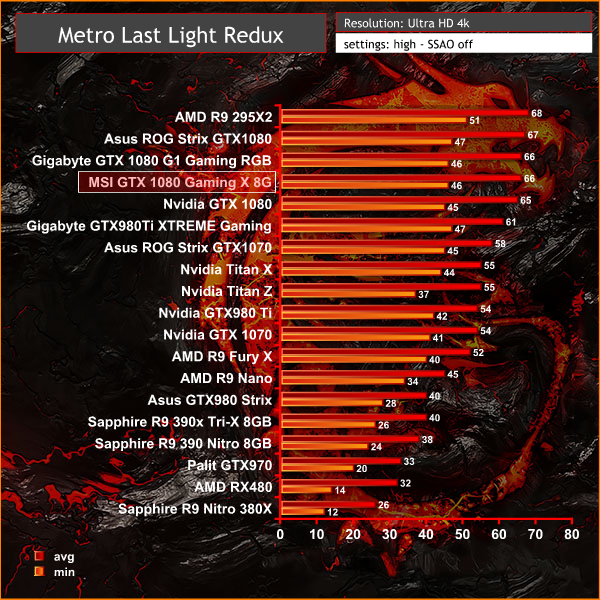
We have to lower image quality settings at 4K to maintain smooth frame rates. The MSI GTX 1080 Gaming X 8G takes a position close to the top of the chart, averaging 66 frames per second.
Hitman (2016) is a third-person stealth video game in which players take control of Agent 47, a genetically enhanced, superhuman assassin, travelling to international locations and eliminating contracted targets. As in other games in the Hitman series, players are given a large amount of room for creativity in approaching their assassinations. The game is being released in stages, which hasn't proved too popular with a large audience.
We test with many of the settings maximised, SSAO is disabled however as I found it causes some crashing. I have to say that Hitman is a little unstable at times under the best of situations, but we managed to get it running well enough to benchmark. The built in benchmark is very flaky indeed however, so real world runs had to be used.
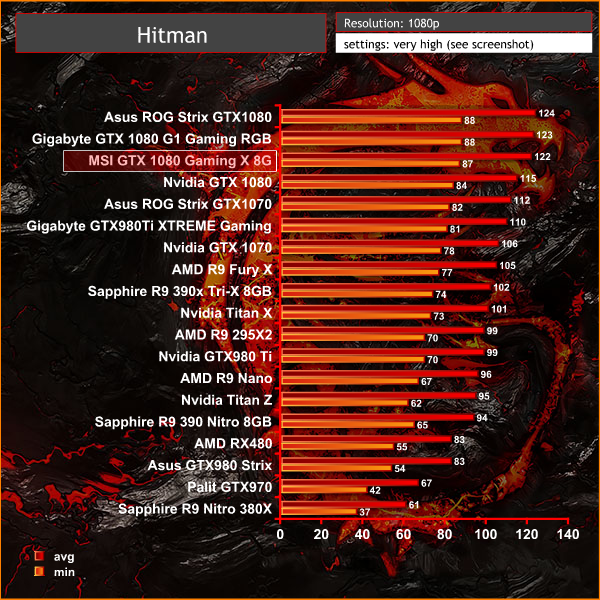
At 1080p the MSI GTX 1080 Gaming X 8G averages 122 frames per second, holding a position close to the top of the graph behind the faster clocked GTX 1080 partner cards from Asus and Gigabyte.
Hitman (2016) is a third-person stealth video game in which players take control of Agent 47, a genetically enhanced, superhuman assassin, travelling to international locations and eliminating contracted targets. As in other games in the Hitman series, players are given a large amount of room for creativity in approaching their assassinations. The game is being released in stages, which hasn't proved too popular with a large audience.
We test with many of the settings maximised, SSAO is disabled however as I found it causes some crashing. I have to say that Hitman is a little unstable at times under the best of situations, but we managed to get it running well enough to benchmark. The built in benchmark is very flaky indeed however, so real world runs had to be used.
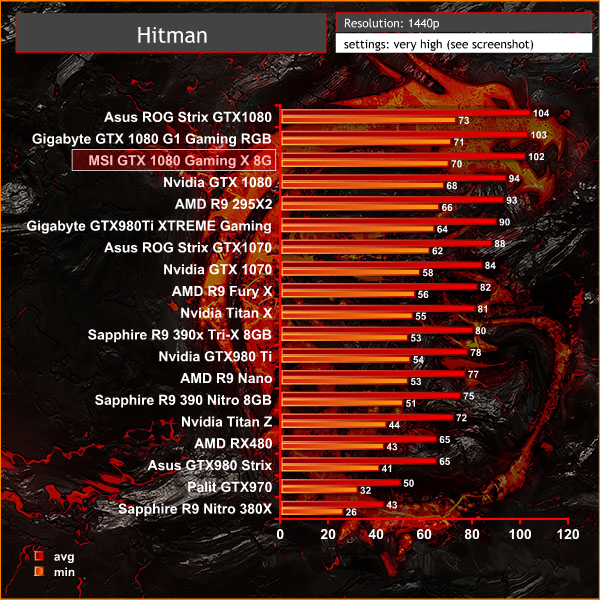
At 1440p the engine runs super smooth, holding an average over 100.
Hitman (2016) is a third-person stealth video game in which players take control of Agent 47, a genetically enhanced, superhuman assassin, travelling to international locations and eliminating contracted targets. As in other games in the Hitman series, players are given a large amount of room for creativity in approaching their assassinations. The game is being released in stages, which hasn't proved too popular with a large audience.
We test with many of the settings maximised, SSAO is disabled however as I found it causes some crashing. I have to say that Hitman is a little unstable at times under the best of situations, but we managed to get it running well enough to benchmark. The built in benchmark is very flaky indeed however, so real world runs had to be used.
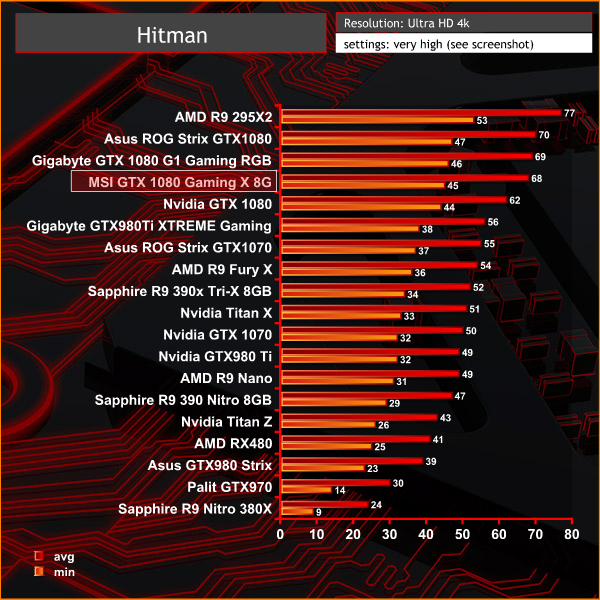
At Ultra HD 4K the engine averages 68 frames per second, just behind the Gigabyte GTX 1080 G1 Gaming.
We have built a system inside a Lian Li chassis with no case fans and have used a fanless cooler on our CPU. The motherboard is also passively cooled. This gives us a build with almost completely passive cooling and it means we can measure noise of just the graphics card inside the system when we run looped 3dMark tests.
We measure from a distance of around 1 meter from the closed chassis and 4 foot from the ground to mirror a real world situation. Ambient noise in the room measures close to the limits of our sound meter at 28dBa. Why do this? Well this means we can eliminate secondary noise pollution in the test room and concentrate on only the video card. It also brings us slightly closer to industry standards, such as DIN 45635.
KitGuru noise guide
10dBA – Normal Breathing/Rustling Leaves
20-25dBA – Whisper
30dBA – High Quality Computer fan
40dBA – A Bubbling Brook, or a Refrigerator
50dBA – Normal Conversation
60dBA – Laughter
70dBA – Vacuum Cleaner or Hairdryer
80dBA – City Traffic or a Garbage Disposal
90dBA – Motorcycle or Lawnmower
100dBA – MP3 player at maximum output
110dBA – Orchestra
120dBA – Front row rock concert/Jet Engine
130dBA – Threshold of Pain
140dBA – Military Jet takeoff/Gunshot (close range)
160dBA – Instant Perforation of eardrum

The MSI GTX 1080 Gaming X 8G is a very quiet card, even under load conditions – with the default fan profile. In most systems it will be barely audible with other system fans in the mix. We can report our sample exhibited no coil whine, even under artificially stressed conditions.
The tests were performed in a controlled air conditioned room with temperatures maintained at a constant 21c – a comfortable environment for the majority of people reading this. Idle temperatures were measured after sitting at the desktop for 30 minutes. Load measurements were acquired by playing Rise Of The Tomb Raider for 90 minutes and measuring the peak temperature. We also have included Furmark results, recording maximum temperatures throughout a 10 minute stress test. All fan settings were left on automatic.

The MSI GTX 1080 Gaming X 8G runs in the mid sixties under gaming load and there will be times when idle or under lower load situations that the fans will disable completely. Below 60c the fans all switch off.
We install the graphics card into the system and measure temperatures on the back of the PCB with our Fluke Visual IR Thermometer/Infrared Thermal Camera. This is a real world running environment playing Rise Of The Tomb Raider for extended periods of time.
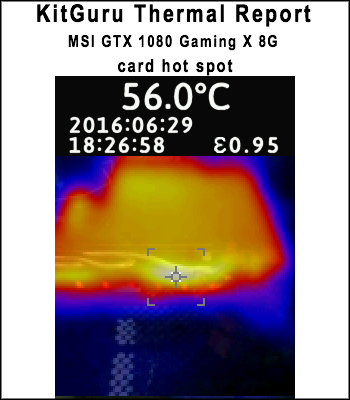
The back of the PCB holds at just below 52c under extended load, which is very cool. The heatpipes are the hottest part of the exposed card, running between 55c and 57c. The cooler is doing a fine job indeed.
We measure power consumption from the whole system when idle and when gaming, excluding the monitor.
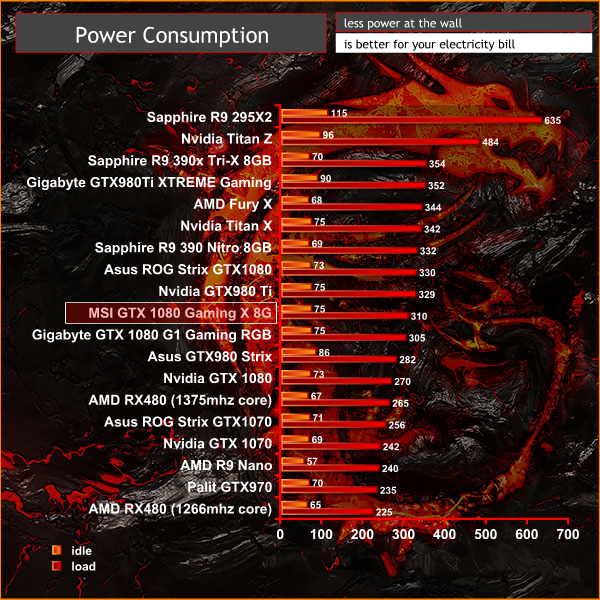
The system with the MSI GTX 1080 Gaming X 8G RGB installed demands around 310 watts, which is around 5 watts more than the Gigabyte GTX 1080 G1 Gaming card and 20 watts less than the Asus ROG Strix GTX 1080.
We overclock using the latest version of MSI Afterburner V4.3.0. beta 4.
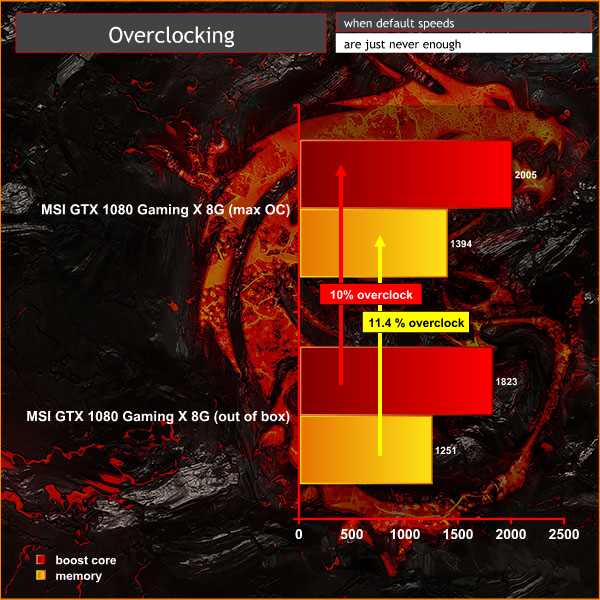
We pushed the core as far as we could before instability would occur. We hit a boost speed limit around 2005mhz (+182mhz) the memory maxed out at +569mhz which is a decent result.
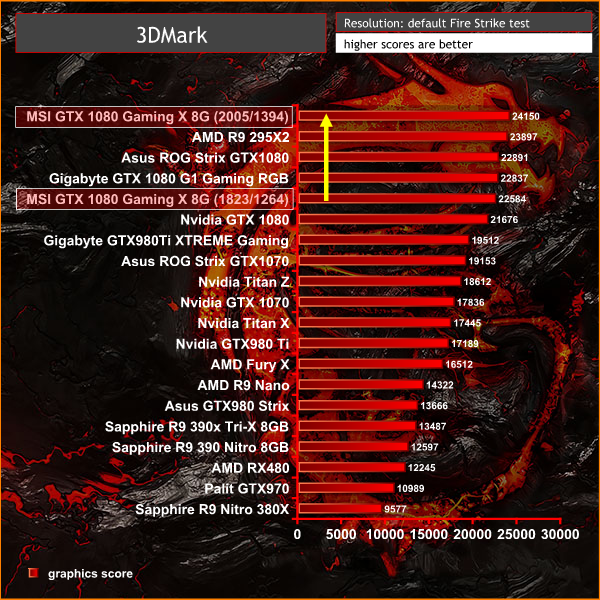
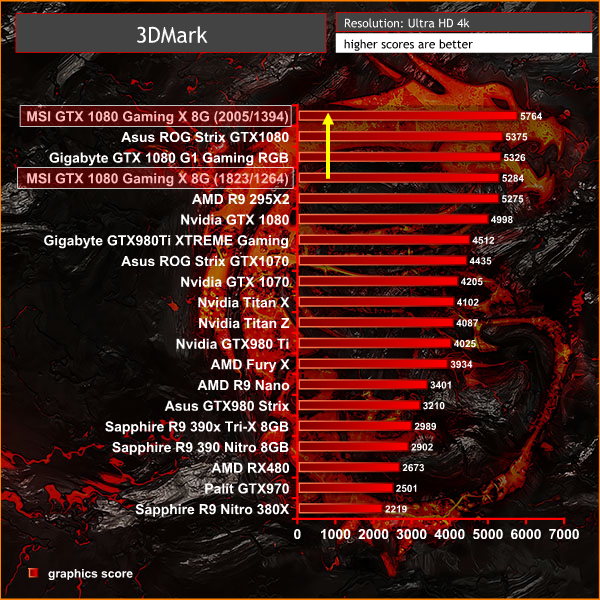
The MSI GTX 1080 Gaming X 8G RGB may be clocked a little slower than the Asus and Gigabyte GTX 1080 cards, however when manually tweaked in MSI Afterburner it can keep up with any competitor card we have reviewed so far. The results indicate good performance gains.While we wait on custom partner RX480 cards to hit our labs we have turned our focus to the MSI GTX 1080 Gaming X 8G RGB, the latest in a line of GTX 1080 solutions we have reviewed in the last month.
The MSI GTX 1080 Gaming X 8G RGB is without doubt the prettiest GTX 1080 we have reviewed. I love the styling, accenting and sleek lines of the cooler, and the RGB lighting will appeal to a wide enthusiast audience who like to showcase their hardware from inside a windowed chassis.
The MSI GTX 1080 Gaming X 8G RGB might not be quite as fast as the ASUS or Gigabyte cards we have reviewed ‘out of the box', however after manually tweaking in Afterburner, the end results are stellar. I would take an educated guess that most of our audience are buying a GTX 1080 to overclock with a software tool such as Afterburner anyway. In that case we have found that most of the high end GTX 1080 cards hit very similar overclocked speeds.
Instead of opting for a triple fan configuration cooler MSI have decided to install two bigger fans in their shroud. In regards to noise levels, the MSI GTX 1080 is quiet with plenty of options available to tweak the settings either in the basic MSI Gaming App or via the more sophisticated Afterburner tool. The RGB lighting is also fully customisable. This cooler is certainly not outperformed by the latest triple fan configurations from MSI's competitors.
Our MSI GTX 1080 Gaming X 8G RGB sample ships with a BIOS speed set at 1683mhz/1822mhz turbo. The OC speed is only directly available by clicking a button in the MSI Gaming Application (shown earlier in the review). MSI list the available speeds on this page. There is also a slower setting available which downclocks the card and reduces fan noise further.
Overclockers UK stock the MSI GTX 1080 Gaming X 8G RGB. Retail price was initially set at £629.99 in the UK, but due to BREXIT and the falling value of the pound the cost has risen lately to £679.99 inc vat. You can buy it HERE.
Discuss on our Facebook page, over HERE.
Pros:
- the best looking GTX 1080 we have seen.
- good combination of noise and cooling efficiency.
- overclocks to 2ghz+ easy enough.
- this dual fan cooling system can compete.
- fans disable below 60c.
Cons:
- a little higher clock speeds out of the box wouldn't have hurt.
- expensive in the UK right now.
Kitguru says: The MSI GTX 1080 Gaming X 8G RGB is the Cameron Diaz of graphics cards – its a beauty. MSI continue to make the best looking graphics cards on the market. The Gaming X combines top drawer performance with effective cooling proficiency and the ability to hit 2ghz+ in MSI Afterburner without much effort.
 KitGuru KitGuru.net – Tech News | Hardware News | Hardware Reviews | IOS | Mobile | Gaming | Graphics Cards
KitGuru KitGuru.net – Tech News | Hardware News | Hardware Reviews | IOS | Mobile | Gaming | Graphics Cards


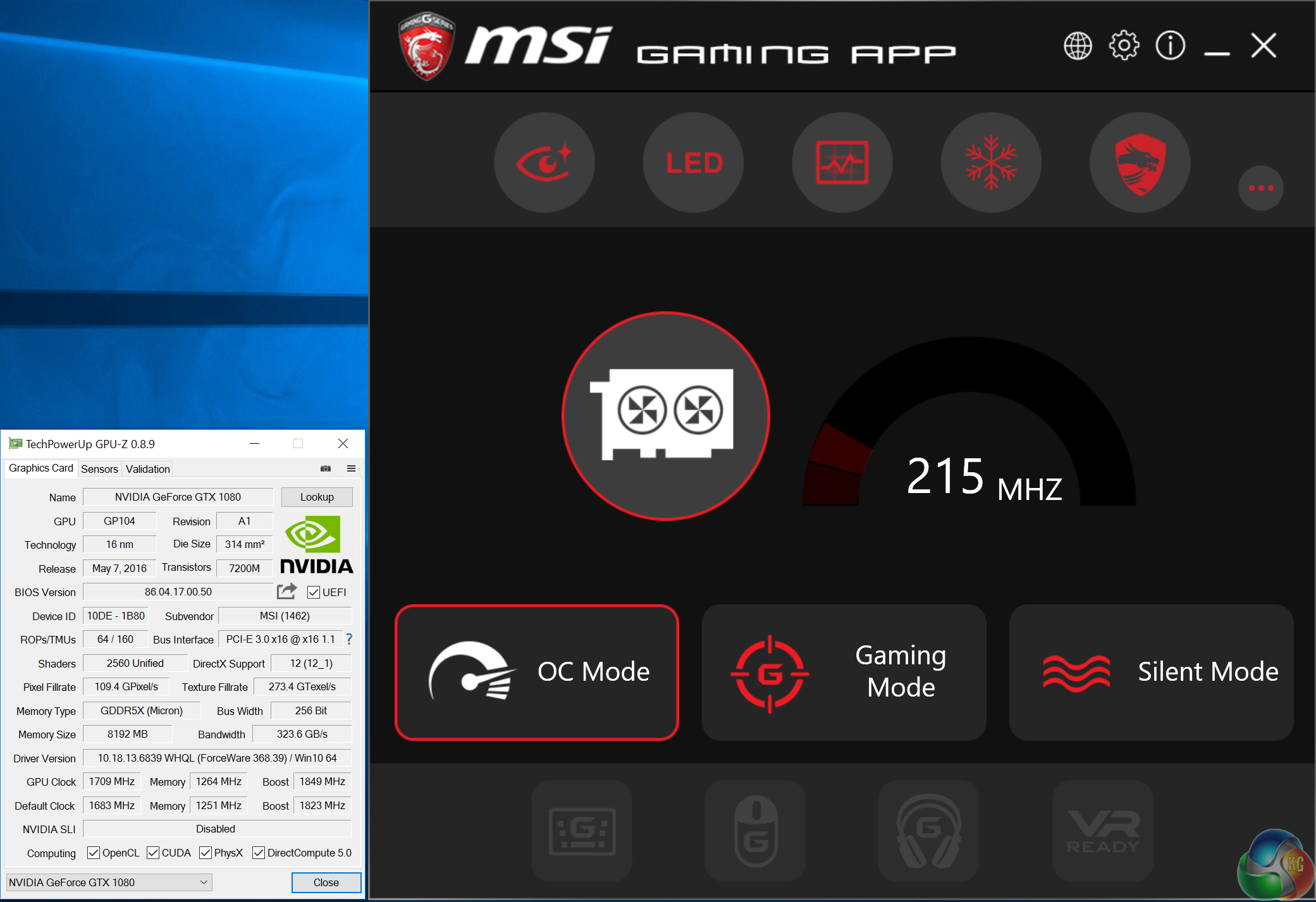
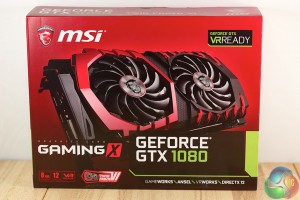
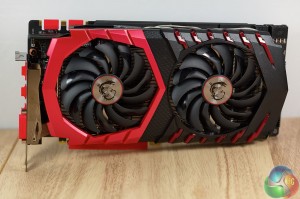
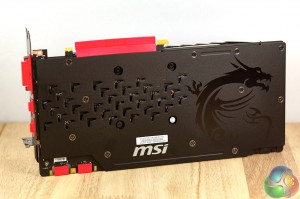
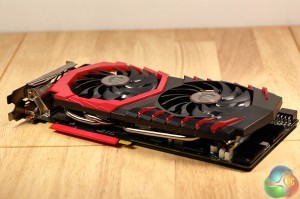
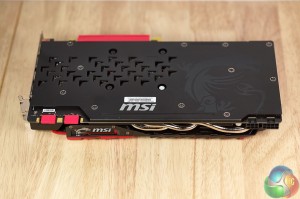


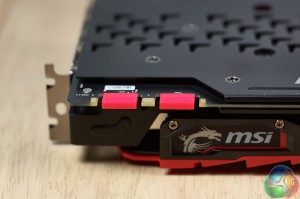
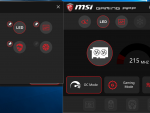
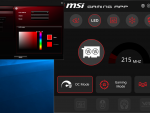
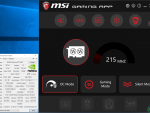
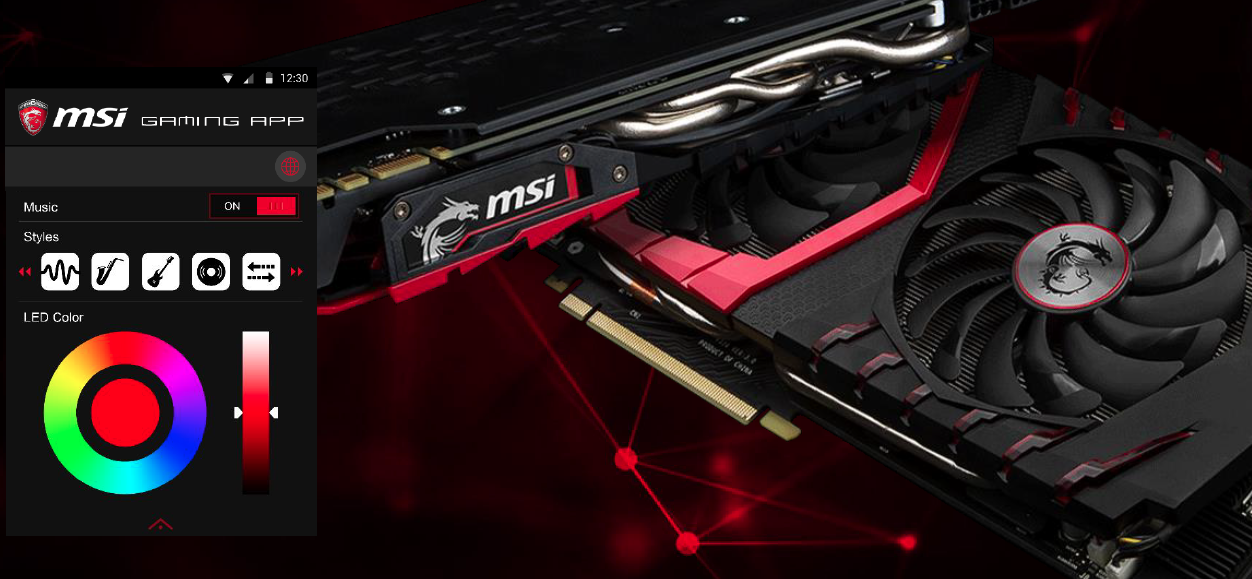
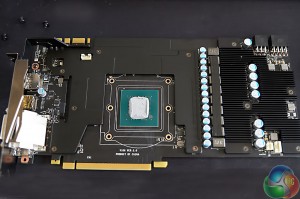
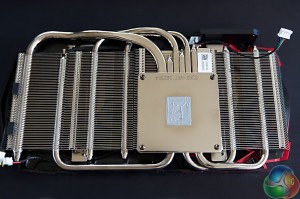
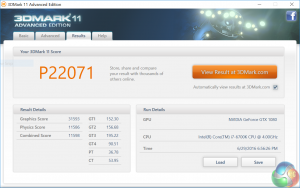
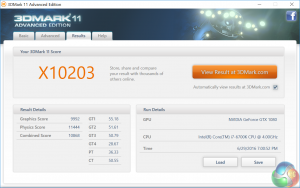
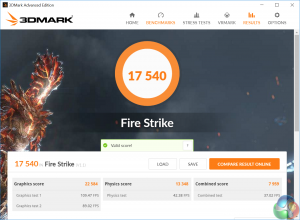
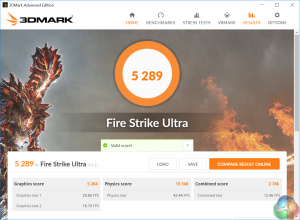

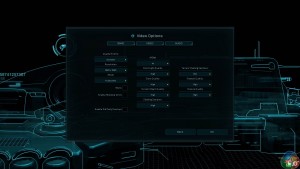
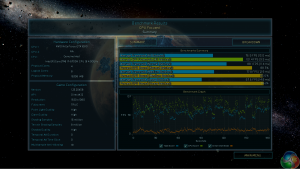
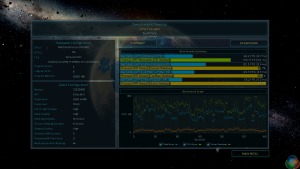
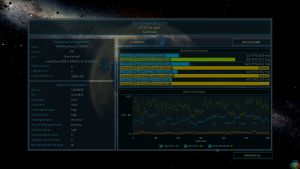










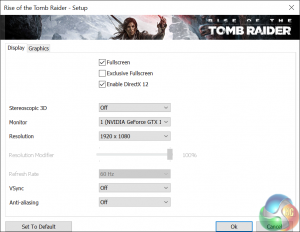
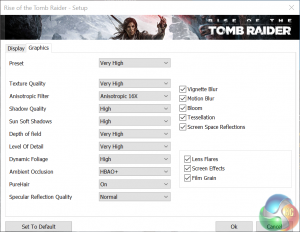
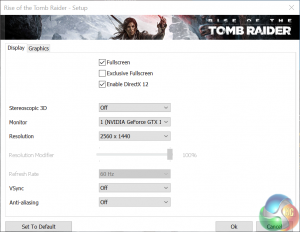
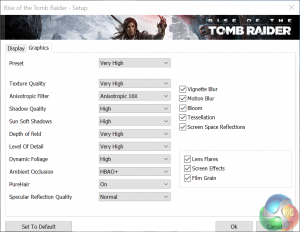
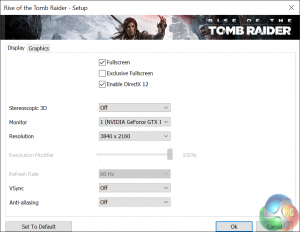
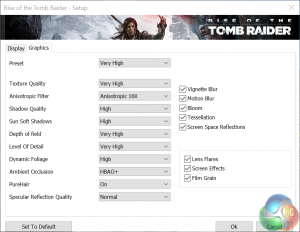












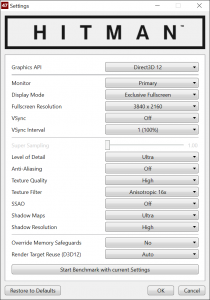
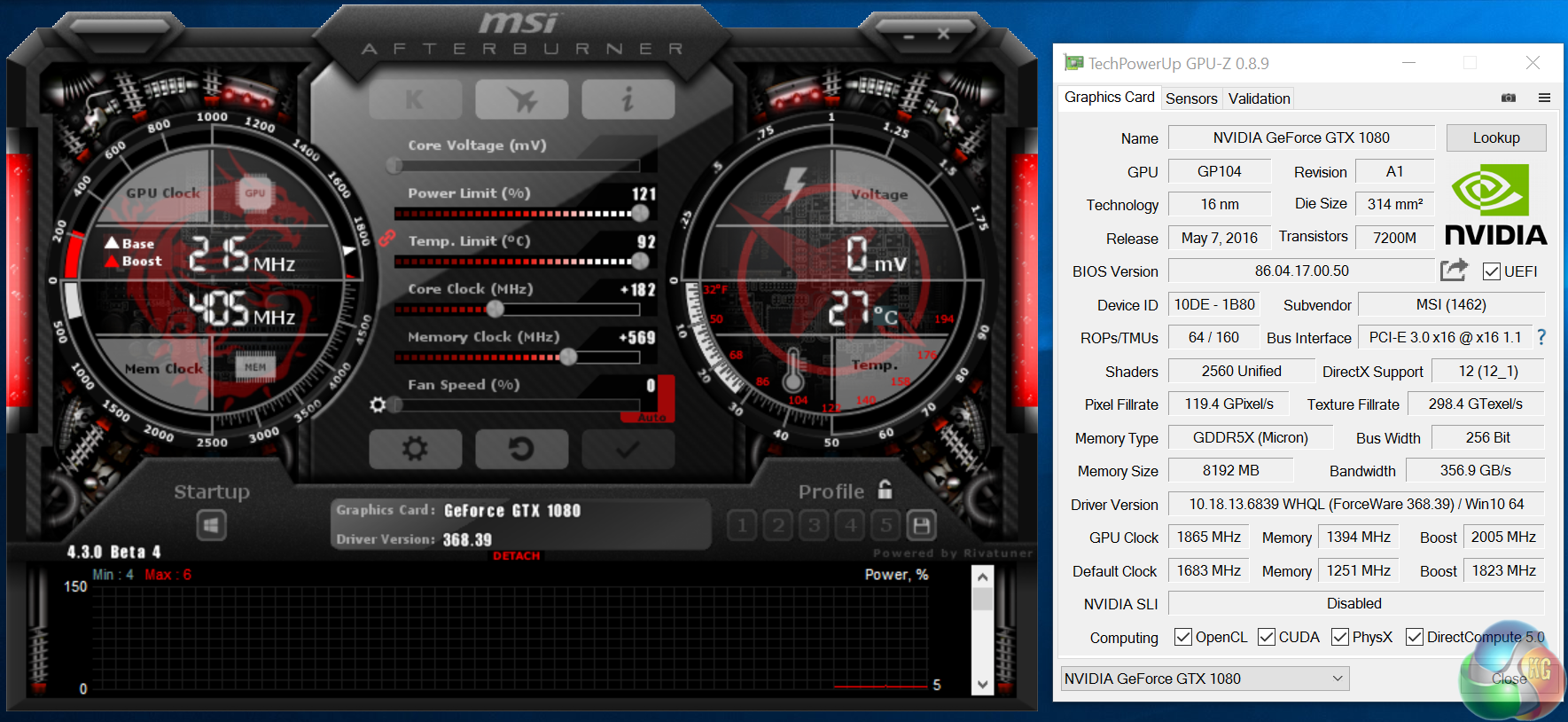
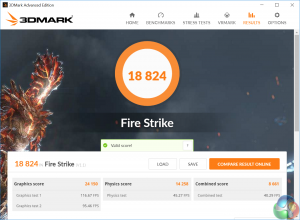
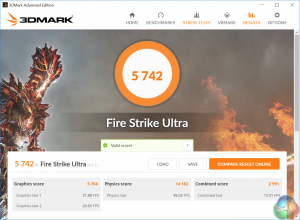
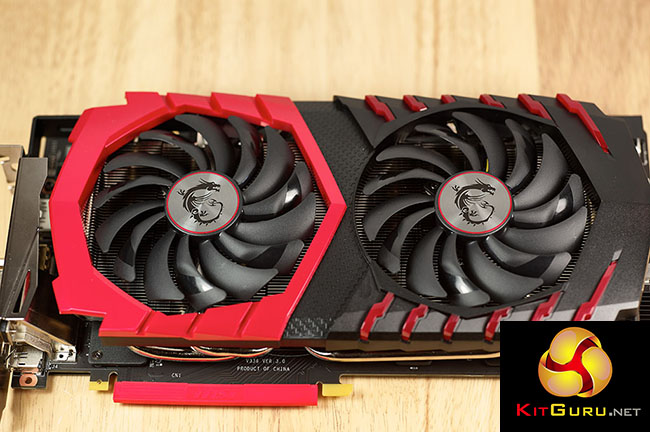



I currently profit about 6-8 thousand dollars a month with an online job i found on internet. If you are looking to do easy online jobs for few h each day from comfort of your home and make good profit while doing it… This is a job for you… FAVE.CO/29lfYDj
<<u.
✸✸✸✸✸:✸✸✸✸✸:✸✸✸✸✸:✸✸✸✸✸:✸✸✸✸✸:✸✸✸✸✸:✸✸✸✸✸:✸✸✸✸✸:✸✸✸✸✸:✸✸✸✸✸:::::::!bk109u:….,….
<<u.
✸✸✸✸✸:✸✸✸✸✸:✸✸✸✸✸:✸✸✸✸✸:✸✸✸✸✸:✸✸✸✸✸:✸✸✸✸✸:✸✸✸✸✸:✸✸✸✸✸:✸✸✸✸✸:::::::!bk109u:….,….
The average clock speed is higher on games than the ASUS Strix. OC3D pointed it out. And that though it is lower power it is proving that there is more than just top OC gpu clock speed.
I just got this card home and it is so sexy. Would loved the Gaming Z but cannot find stock for love nor money… And pre orders were £800… Just for RGB msi badge on Backplate. Ahaha.